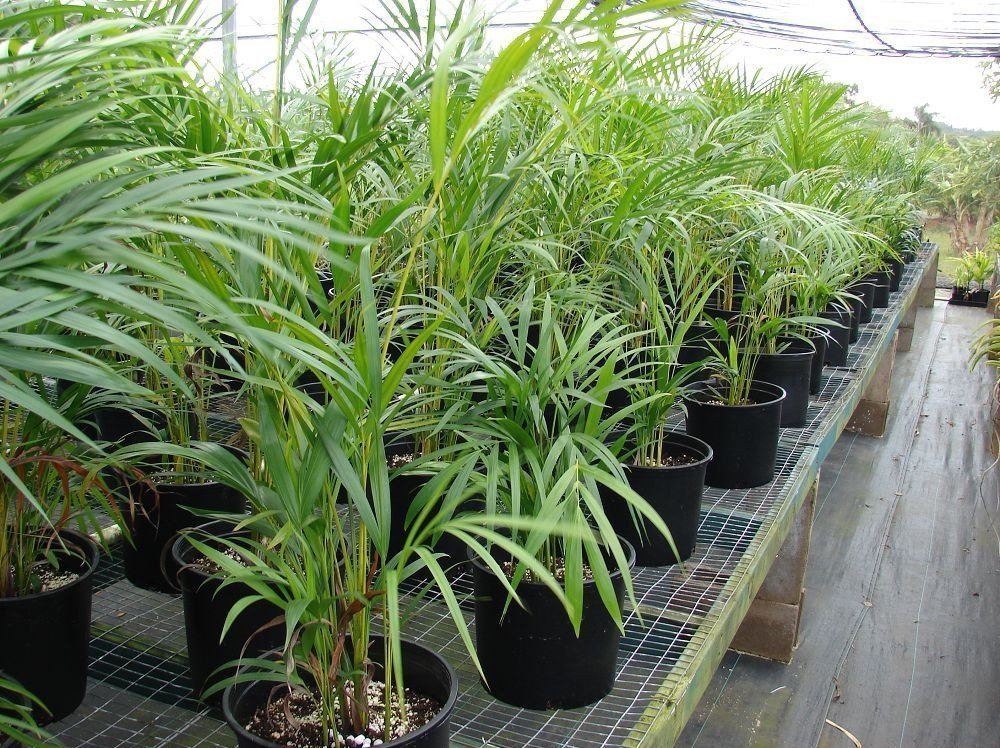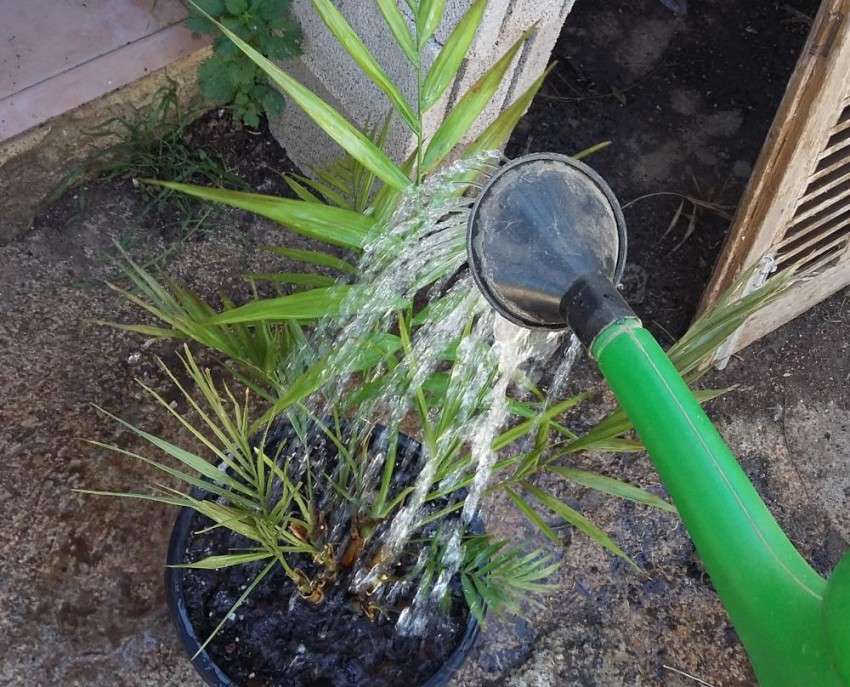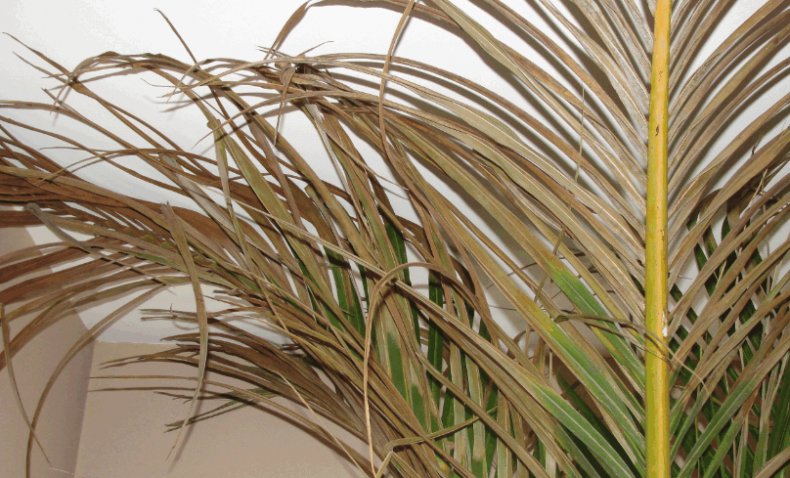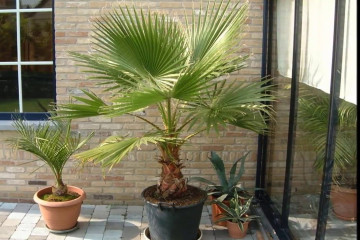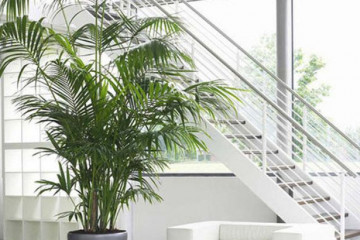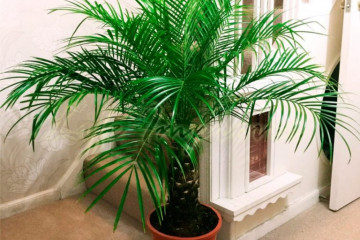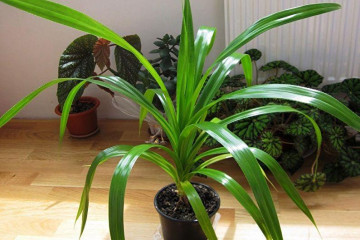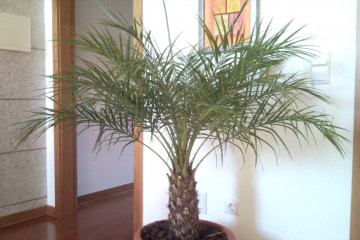Areca palm chrysalidocarpus - home care
Content:
Few know the complex Latin name of this plant; it itself is well known to amateurs of floriculture. Areca chrysalidocarpus, or home palm, is a plant that is loved for its unpretentiousness and attractive appearance.
The palm tree is great for landscaping an office space or growing a home. The plant tolerates dryness well in an apartment, does not suffer from temperature changes, it does not need a lot of light. In general, an almost perfect plant for creating a beautiful tropical style interior.
Popular types
The chrysalidocarpus palm does not have a single trunk, like the classic palm tree familiar to everyone. Instead - a bush of green mass of leaves. According to the rules, this plant cannot be called a palm tree - the leaves are evergreen, beautiful, similar to palm trees, which form dense and slender thickets. That is why this plant is called "reed palm".
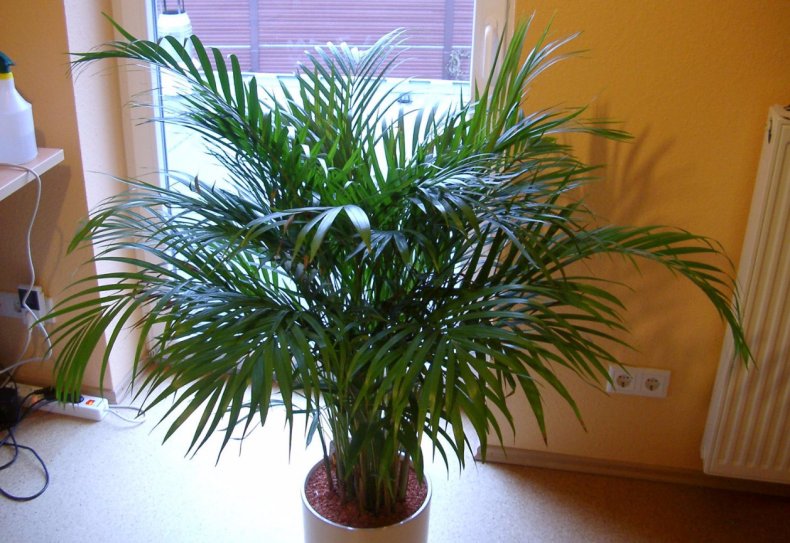
Many people are familiar with this plant, the palm tree has long taken root in apartments and public places
She comes from Madagascar, grows in the tropics of Asia and Oceania. The areca chrysalidocarpus palm is often grown at home. Indoor specimens, even with the best care, will never come close to reaching the height of their natural counterparts, which in natural conditions reach 6 meters. However, indoor species can grow up to 2 meters in height, pleasing the eye with juicy long narrow-lanceolate leaves.
As for the flowers of chrysalidocarpus, in the house areca rarely blooms, if this happens, then the panicles of a nondescript look are formed in the axils of the leaves, and they self-pollinate there, producing seeds. These seeds are poisonous and can cause stomach ailments when consumed.

Areca's look is similar to reed: the same bright, always green, with a powerful juicy mass of leaves
Among the species popular in indoor floriculture, there are three main ones:
- Chrysalidocarpus yellowish (Chrysalidocarpus lutescens) - this plant has an interesting color of stems with petioles - green-yellow. The leaves are large, can grow up to 2 meters long and up to 60 cm wide. In the inflorescence axil, during flowering, there is a brush framed with yellowish flowers;
- Chrysalidocarpus madagascariensis (Chrysalidocarpus madagascariensis) - this species is most similar to the classic palm tree. It has a treelike trunk widened near the base. Leaves are very rich green, dense;
- Chrysalidocarpus lutescens, or chrysalidocarpus Lutescens - a palm tree grows in a lush bush without a trunk. Long petioles with leaves, even at home, grow up to one and a half meters, in general, the plant can stretch to the ceiling. This palm is sometimes also called yellowish chrysalidocarpus for its slightly yellow leaf tips.
Growing chrysalidocarpus from seeds
There is a way to grow plants from roots. They are formed near the root, they can be used for breeding by the transplant method. However, there is an even more interesting option, because chrysalidocarpus lutescens can be grown from seeds.
To do this, take seeds and do this:
- The seeds are soaked in warm water for a couple of days.
- A peat-sand mixture is poured into shallow boxes, seeds are sown into moist soil to a depth of 2 cm.
- Seedlings should appear in 3-4 months, all this time the air temperature should be warm, the earth should be moist.
- When the first true leaves appear, young shoots should be transplanted into pots with a larger diameter - 10-12 cm. Over the spring and summer, the seedling will become stronger, new leaves will begin to appear in the outlet.
Home care
It is not difficult to take care of this plant, it is enough to know the general basics of home floriculture.
Illumination
The palm tree tolerates the sun well, it is not only thermophilic, but also quite comfortable in direct sunlight. At the same time, if it is very hot, then it is better to arrange ventilation in the room, and shade the crown at least a little.
Often the plant is taken out into the garden for the summer period, left on the street, then there are no problems with strong heat. In the winter months, it is usually rearranged to the brightest place in the apartment; in dark rooms, the setting for a southern palm tree can be improved with fluorescent lamps.
Watering
The palm tree is hygrophilous, it lives very well in a humid environment, therefore, from time to time the plant needs a light spraying with warm water. You can install a container with water next to the pot. In summer, the plant responds well to pouring fresh water over the leaves. Water washes away dust and refreshes the leaves. In winter, bathing is not necessary, it is enough to periodically wipe the petioles and leaves with a damp clean cloth.
Watering should be abundant and frequent. However, to whom the earth should be allowed to dry out a little on top in the summer, in the winter, leave it dry to half the pot. The water temperature should be above room temperature by a couple of degrees, it itself should be well-settled.
Temperature regime
The extremely low temperature for a palm tree is plus 16, it is impossible to lower it, as the plant will wither. In summer, it is permissible to keep a flower at plus 22-25.
Soil selection and fertilization
Caring for chrysalidocarpus will be easier if you initially select the right soil for it, then apply fertilizers in a timely manner. Palm trees grow well on light and fertile soils, so the land for them should contain a rich composition, including 2 parts of sod land, two parts of humus, 1 part of peat and rotted manure, 1 part of sand and half of charcoal. This mixture can also be used to transplant a plant from a smaller pot to a larger pot.
The cause of yellowing and drying
It happens that the leaves of chrysalidocarpus turn yellow and begin to die off. Florists ask what it can be.
Often, the yellowish chrysalidocarpus Lutescens becomes unattractive when taken care of at home. Typically, loss and yellowing of leaves are associated with disturbed care. Manifestations of major errors:
- from a lack of moisture or, on the contrary, from excessive watering, the plant may begin to turn yellow;
- with excessively dry air in the room, the leaves begin to dry;
- stagnant water in the pot leads to brown spots on the shoots and leaves.
The elimination of these violations will again heal the plant and make it viable.
Diseases and pests
Improper care provokes the occurrence of fungal diseases, as well as other diseases of this plant. Such problems include, for example, a fungal infection or root rot, which first appear as brown spots on the leaves, then spread throughout the plant. To prevent the spread of the disease, the affected areas are cut out, the plant itself is treated with a fungicide solution.
Parasites in the form of spider mites also interfere with the development of the palm tree. There is a simple method of struggle against them by wiping the leaves and shoots with an alcohol solution. You can also treat a palm tree with chemical insecticides, this is a more effective tool than a simple wipe. Spray treatments should be done twice with one week in between.
It is possible to grow areca palm even if you have no experience with houseplants. It is unpretentious, good enough and suitable for landscaping, both at home and for creating a green area in the office.
